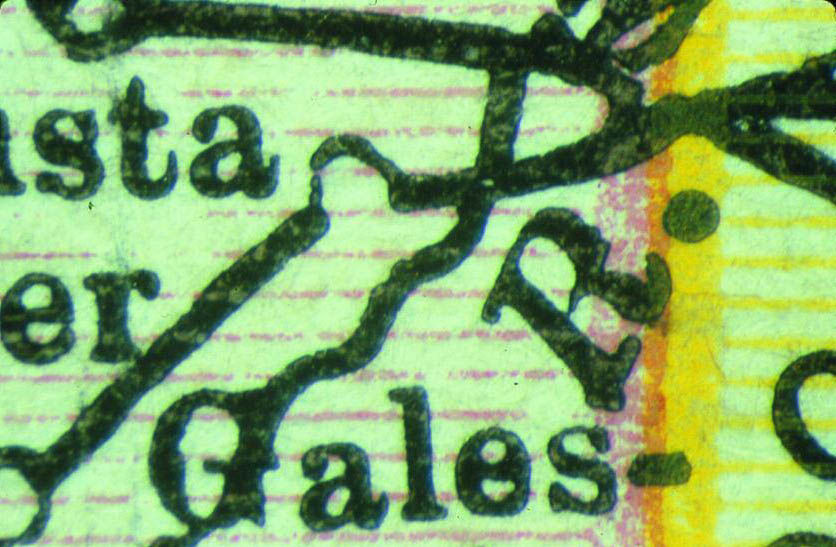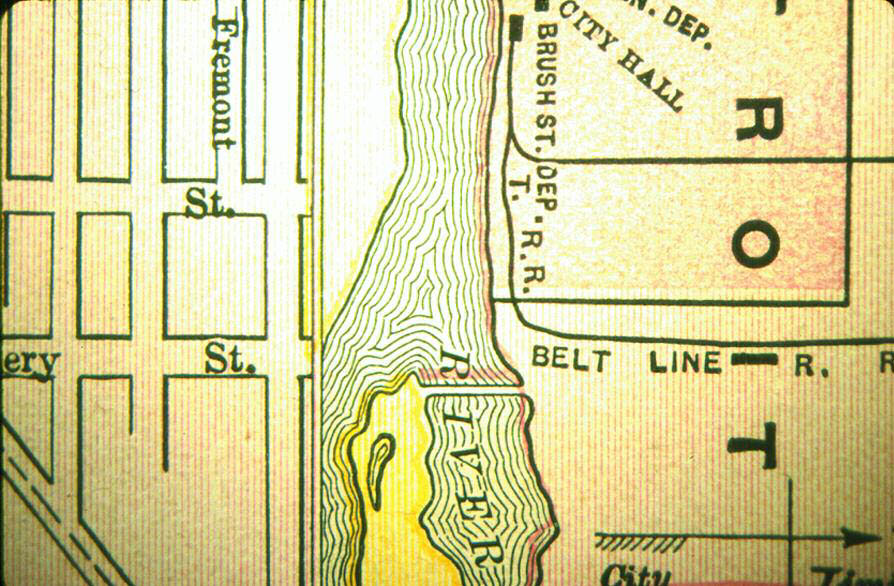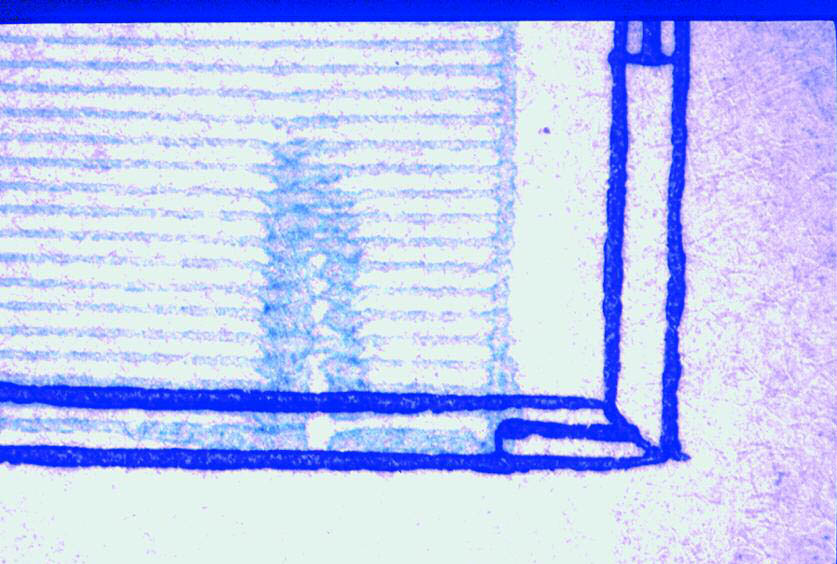A HISTORICAL MAP-PRINTING TECHNIQUE: WAX ENGRAVINGNANCY PURINTON
3 IDENTIFICATIONOne important identification feature of a wax-engraved image is that the lines do not vary. A line remains the same thickness throughout its length because of the tools and light pressure used when engraving it. Lines could be made to vary in width, however, because the engraver could use a different tool for sections of a river, smoothing the breaks with a needle and making the river line diminish. Unless the engraver intended them to change, the lines in a wax-engraved image do not vary. Also, lines made of a series of symbols like dots, dashes, and crosses do not vary because they were made using wheeled tools. Another important identification characteristic is that the point symbols (state capital and county seat marks) are sharply defined and regular in shape because they are always made from the same tool (see fig. 2, page 443). Precisely executed on the ruling machine, a series of parallel thin lines created the colored areas. The lines were not supposed to be easily seen by the naked eye. Wax-engraved ruled colors usually have a wide band surrounding them. This band helped finish off the ends of the ruled wax lines and protect the fragile ends of the wax-engraved lines, even in the final printing plate (fig. 17, see page 445).
Solid areas of color were unusual. They were made by cooling the wax and chipping it away to produce a flat area in the printing plate. The pink area in the top right corner of figure 18 (see page 445) is an example. Wax engraving was essentially a nonphotographic technique, so gradually shaded areas were
If there is one characteristic that wax-engraved maps bequeathed to cartography, it could be the tendency for a preponderance of names on maps. The minute type possible in wax engravings made the inclusion of more names easier. Many comparisons between early offset lithography and relief printing contain the word “sharp” to describe the relief process. Hand-lettering could be done in wax engraving and was easier to accomplish than in intaglio or planographic printing because the engraver did not need to reverse the letters as he worked. Hand-lettering was used in the early years of wax engraving but gave way to the use of printer's type. Figure 2 (see page 443) is a beautiful example of stamped printer's type in a wax-engraved map. Wax engraved images are the result of a relief printing process, so the squeeze of ink at the edges of the type and the lines is evident under magnification. The paper has the relief print characteristic of plate indentation if the paper is thin enough and the press force was great enough to make an indentation. This indentation will be more apparent where more than one plate was used to make the image, as in color images. If multiple plates were used, the registration points may be visible because the corners where the paper was pressed multiple times will be embossed. Registration in multiple-plate wax-engraved images, such as colored maps, was difficult to achieve. Registration problems might be blamed on the printer, but it should also be acknowledged that wax-engraved plates often did not fit together well because of the shrinkage occurring when the electrolyte shell was backed with molten metal. The plate shrank as it cooled, a process that made registration difficult to control. In figure 19 (see page 445), the blue, yellow, pink, and black lines do not all converge at “Cairo” as they should.
In summary, the characteristics of wax-engraved maps are regularity of lines, consistent symbols, lined color areas, sharply printed minute type, ink squeeze, and paper indentation. Flaws in the prints occurred because both the wax lines in the mold and the resulting thin metal lines in the cast metal printing plate were very delicate. When the engraver was working in a tiny, crowded part of the map, a symbol or letter could be accidentally damaged, as is the town circle in figure 17. If the damage to the ruled lines in figure 20 (see page 445) had occurred in the wax stage, it could have been easily repaired, but when copper lines in the cast printing plate were damaged, the plate continued to be used.
|



